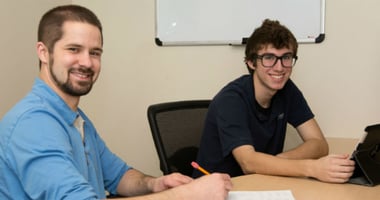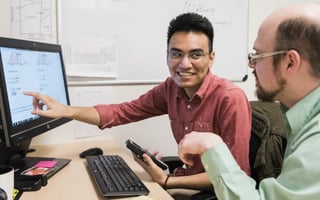Education is very essential to your children and their future. However, not all students are the...
Learning Science in a One-to-One Environment
One-to-one instruction is very intense. With only one student in each class, every student has the undivided attention of a teacher. Although this format is clearly an asset for building skills such as math and writing, the question sometimes arises about how well one-to-one instruction works in a subject like science, which is often promoting discovery of concepts through small lab groups or 3-4 students who test a hypothesis and then analyze data as part of the learning process.
All of these steps and multiple opportunities to learn through discovery remain intact and even enhanced using a one-to-one instruction model. "We're committed to active learning in all academic areas. And nowhere is this more important than in the sciences. Science can feel like a foreign language to many students, which is why it's critical to experience it physically. At Brightmont, students learn by doing as they personally conduct experiments in Chemistry, Biology, and Physics with a teacher in a one-to-one lab environment," says Kathie Bach, Chief Academic Officer for Brightmont Academy.
Hands-On Experiences are More Memorable
A study conducted by the University of Chicago found that different parts of students' brains were activated when participating in hands-on science experiences, and later these same students achieved higher scores on quizzes when compared to counterparts who only read about the concept or observed a demonstration in class. Physically engaging the student was especially beneficial in science and math.
One-to-one schools such as Brightmont Academy integrate hands-on experiences into science courses to support the learning and retention of complex concepts.
The Student is Accountable
As is true for other subjects, the student must complete all assignments and answer all questions because there are no other students in the class. The teacher can check for understanding, and observe immediately when the student needs additional instruction or practice. When completing labs, not only is the student doing each piece of the lab or experiment, the teacher can observe when the student is not clear on directions and prevent frustration due to misinterpreting directions.
Not all science labs go as planned, and a great deal of learning can come from a failed experiment. However, this can also be quite frustrating for the student. The same teacher who quietly stood by while an incorrect measurement or contaminated work area contributed to the atypical outcome can coach the student on factors that might impact results so that the student doesn't walk away more confused than ever. In the book, Mastery, Robert Greene describes the value of learning from someone who has already mastered the skill through his term, "ideal apprenticeship." By using the one-to-one instruction model, every student has access to an ideal apprenticeship.
Broader Range of Opportunities
A one-to-one school offers a different range of lab experiences compared to a traditional high school science room with a full lab, including many areas where greater depth and more extensive opportunities are possible. For example, most high school Biology classes offer the opportunity to dissect simple organisms, such as an earthworm or sheep's eye, and in the more advanced facilities, work up to dissecting a frog. These same opportunities exist for students in a one-to-one school, but because there is only one student performing the activity in a highly supervised environment, the student may also gain exposure to more complex dissection labs. Students at Brightmont Academy have gained greater insights into the different body systems by dissecting fetal pigs, cats, and even sharks for those interested in marine biology.
Supporting Skills Can Also Be Strengthened
Some students struggle in science courses not because they fail to understand the scientific content, but because they lack appropriate skills in other areas that impact their performance in science. For example, weak math skills may contribute to the inaccurate collection or analysis of data. Some students lack writing skills to summarize lab findings in a lab report appropriately. By providing instruction through a one-to-one model, teachers are able provide remedial instruction in the complementary subjects to help students communicate what they are learning in science. In addition, they may coordinate with the student's other teachers, maximizing instruction time and helping the student to make the most progress possible.
One-to-one schools provide opportunities for greater depth of instruction and pacing that accommodates each individual student's needs. The opportunity for hands-on experiences and lab assignments remains an integral part of science instruction, and is in no way compromised in the smaller setting.
Greene, R. (2013). Mastery (Reprint edition). New York: Penguin Books.
Learning by doing helps students perform better in science. (2015, April 29). Retrieved from https://news.uchicago.edu/article/2015/04/29/learning-doing-helps-students-perform-better-science





